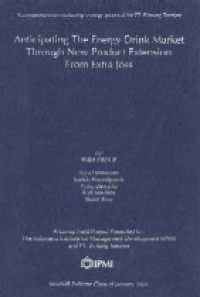
An Analysis of Celular Mobile Telephone Operator Strategy in Indonenesia
| Gmd : Text
| Availability :
| 00000008615 | 150 | (GFP) | Available - Ada |
Indonesia is the first country in the Southeast Asian region that operate cellular mobile technology in 1977, but the development is then left behind due to handphone was percepted as luxury good and imposed high luxury import tax. By welcoming foreign investor and abolishing the luxury import duty, then the number of subscribers rose faster.
The improving economic condition and application of GSM (a digital cellular mobile technology) also other aspects to boost the development of the sector.
Cellular mobile technology is divided into four generation: analog non-cellular, analog cellular (NMT-450, AMPS), digital cellular (GSM, DCS 1800, PDC, DAMPS), and Universal cellular (UMTS, FPLMTS). Analog cellular is continuing to be left by operators worldwide due to its drawback. Digital and universal cellular technologies are the ones that developed and operated. Digital cellular technology offers many times capacity of its predecessor (analog cellular technology), resistance to noise disturbance and bugging, and more security.
Indonesia has seven cellular mobile operators. Among them four operate analog (PT Mobisel, PT Komselindo, PT Metrosel, PT Telesera) and three operate digital cellular (PT Satelindo, PT Komselindo, and PT Excelcomindo). PT Mobisel will move to NMT- 450i (advanced technology of NMT-450). PT Komselindo, PT Metrosel, and PT Telesera are thinking to migrate to DAMPS-CDMA (a digital cellular technology).
PCN/PCS is will be operated in Indonesia. It is a development of digital cellular DCS-1800. Government has given license to some companies to operate the technology.
ACeS, a consortium of PT Pasifik Satelit Nusantara, Philippine, and Thailand, will introduce satellite mobile cellular. The operation cost of this technology to users is still expensive compare to digital cellular technology, so it is not considered as a direct competitor to other operators.
The ratio of cellular telephone per 1,000 people is 2.21 line unit, very small compare to other countries in the region. The cellular in Indonesia still has good prospect.
Using Five Forces Analysis of Michael M. Porter, this industry can be categorized as medium to high attractive industry.
The arena of competition is slightly shifting from current arena to migration as some operators are still in analog technology (AMPS and NMT) and some others are already in digital technology (GSM). The next arena will be universal cellular telephone, which involves satellite technology.
High market attractiveness and low technology competitiveness has made operators to choose a strategy to continue developing this market and made joint venture with foreign partner(s) that has technical competencies. GSM operators is more aggressive in applying this strategy, while AMPS and NMT operators still prefer to apply growth and expansion strategy.
As more operators and new technologies are emerging, current operators has to sharpen their position in the market and try to differ from others in the way of market approach, giving better services, and try to operate more efficient.
Some cooperation agreements are needed to improve the efficiency like sharing marketing network for AMPS operators, sharing cost in building infrastructure for GSM Operators.
Research Location: PT. Mobisel, PT. Komselindo, PT. Metrosel, PT. Teleselera, PT. Satelindo, PT. Telkomsel, PT. Excelcomindo
Supervisor: Prof. Dr. Wagiono Ismangil
Accepted: 4 December 1997
For IPMI Internal -- Read at Library Only.
| Series Title |
-
|
|---|---|
| Call Number |
150
|
| Publisher Place | Jakarta |
| Collation |
v, 72p.: tabs., figs.; 27 cm.
|
| Language |
English
|
| ISBN/ISSN |
-
|
| Classification |
-
|
| Media Type |
-
|
|---|---|
| Carrier Type |
-
|
| Edition |
-
|
| Subject(s) | |
| Specific Info |
-
|
| Statement |
-
|
| Content Type |
-
|
No other version available







